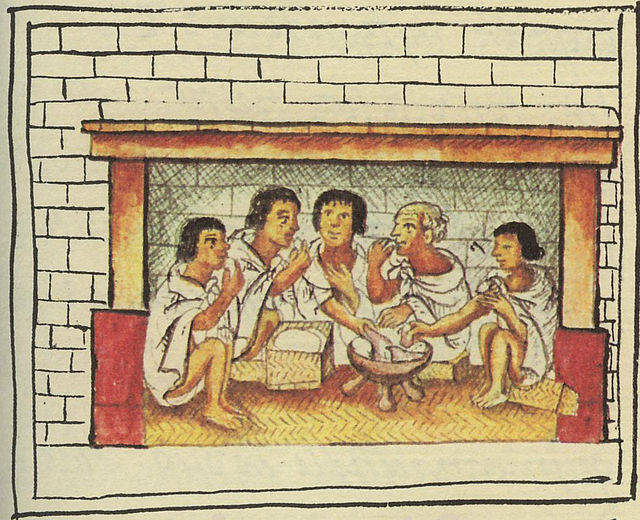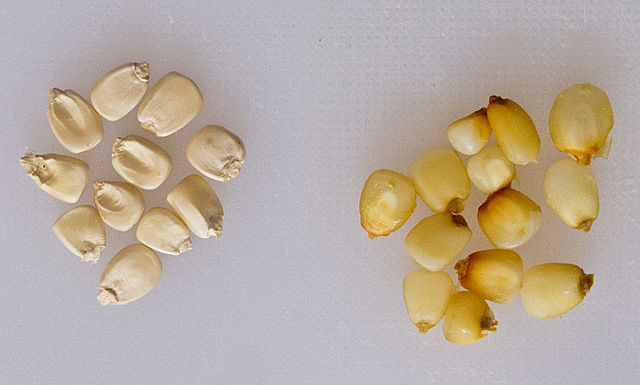Aztec cuisine is the cuisine of the former Aztec Empire and the Nahua peoples of the Valley of Mexico prior to European contact in 1519.
Aztec men sharing a meal. Florentine Codex, late 16th century.
Aztec men at a feast. Florentine Codex.
Spirulina could be harvested off the surface of lakes with nets or shovels and was then dried as cakes which could be eaten with corn tortilla or as a condiment.
An Aztec woman blowing on maize before putting it in the cooking pot, so that it will not "fear the fire" since it is considered a god. Florentine Codex, late 16th century.
Nixtamalization is a process for the preparation of maize, or other grain, in which the grain is soaked and cooked in an alkaline solution, usually limewater, washed, and then hulled. The term can also refer to the removal via an alkali process of the pericarp from other grains such as sorghum.
An 1836 lithograph of tortilla production in rural Mexico
Bowl of hominy (nixtamalized corn kernels)
Dry maize, boiled in lime (right) and untreated (left). In this case, typical of El Salvador, a pound of maize (454 g) is boiled with a tablespoon of lime (15 mL) for 15 minutes, left to stand for a few hours, and washed with fresh water. The hulls are removed, and the kernels ground into masa. Exact methods vary by use and region.







